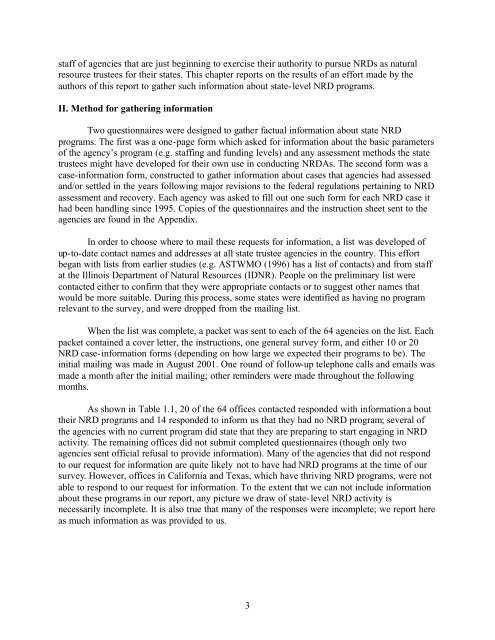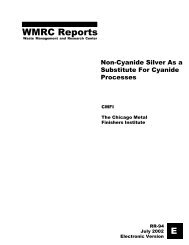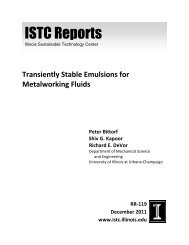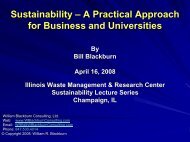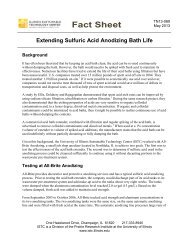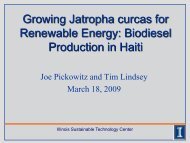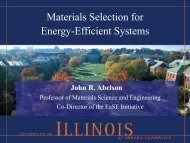Natural Resource Damage Assessment: Methods and Cases
Natural Resource Damage Assessment: Methods and Cases
Natural Resource Damage Assessment: Methods and Cases
You also want an ePaper? Increase the reach of your titles
YUMPU automatically turns print PDFs into web optimized ePapers that Google loves.
staff of agencies that are just beginning to exercise their authority to pursue NRDs as natural<br />
resource trustees for their states. This chapter reports on the results of an effort made by the<br />
authors of this report to gather such information about state-level NRD programs.<br />
II. Method for gathering information<br />
Two questionnaires were designed to gather factual information about state NRD<br />
programs. The first was a one-page form which asked for information about the basic parameters<br />
of the agency’s program (e.g. staffing <strong>and</strong> funding levels) <strong>and</strong> any assessment methods the state<br />
trustees might have developed for their own use in conducting NRDAs. The second form was a<br />
case-information form, constructed to gather information about cases that agencies had assessed<br />
<strong>and</strong>/or settled in the years following major revisions to the federal regulations pertaining to NRD<br />
assessment <strong>and</strong> recovery. Each agency was asked to fill out one such form for each NRD case it<br />
had been h<strong>and</strong>ling since 1995. Copies of the questionnaires <strong>and</strong> the instruction sheet sent to the<br />
agencies are found in the Appendix.<br />
In order to choose where to mail these requests for information, a list was developed of<br />
up-to-date contact names <strong>and</strong> addresses at all state trustee agencies in the country. This effort<br />
began with lists from earlier studies (e.g. ASTWMO (1996) has a list of contacts) <strong>and</strong> from staff<br />
at the Illinois Department of <strong>Natural</strong> <strong>Resource</strong>s (IDNR). People on the preliminary list were<br />
contacted either to confirm that they were appropriate contacts or to suggest other names that<br />
would be more suitable. During this process, some states were identified as having no program<br />
relevant to the survey, <strong>and</strong> were dropped from the mailing list.<br />
When the list was complete, a packet was sent to each of the 64 agencies on the list. Each<br />
packet contained a cover letter, the instructions, one general survey form, <strong>and</strong> either 10 or 20<br />
NRD case-information forms (depending on how large we expected their programs to be). The<br />
initial mailing was made in August 2001. One round of follow-up telephone calls <strong>and</strong> emails was<br />
made a month after the initial mailing; other reminders were made throughout the following<br />
months.<br />
As shown in Table 1.1, 20 of the 64 offices contacted responded with information a bout<br />
their NRD programs <strong>and</strong> 14 responded to inform us that they had no NRD program; several of<br />
the agencies with no current program did state that they are preparing to start engaging in NRD<br />
activity. The remaining offices did not submit completed questionnaires (though only two<br />
agencies sent official refusal to provide information). Many of the agencies that did not respond<br />
to our request for information are quite likely not to have had NRD programs at the time of our<br />
survey. However, offices in California <strong>and</strong> Texas, which have thriving NRD programs, were not<br />
able to respond to our request for information. To the extent that we can not include information<br />
about these programs in our report, any picture we draw of state-level NRD activity is<br />
necessarily incomplete. It is also true that many of the responses were incomplete; we report here<br />
as much information as was provided to us.<br />
3


